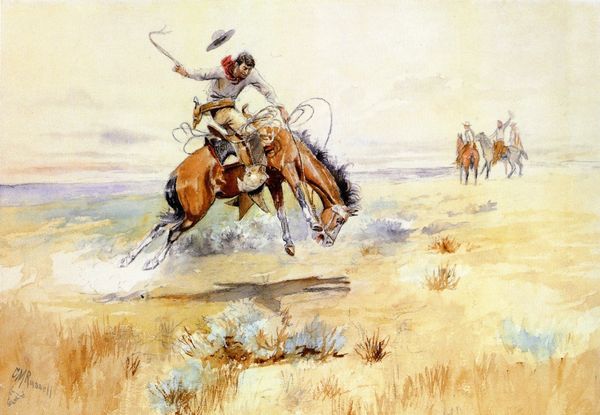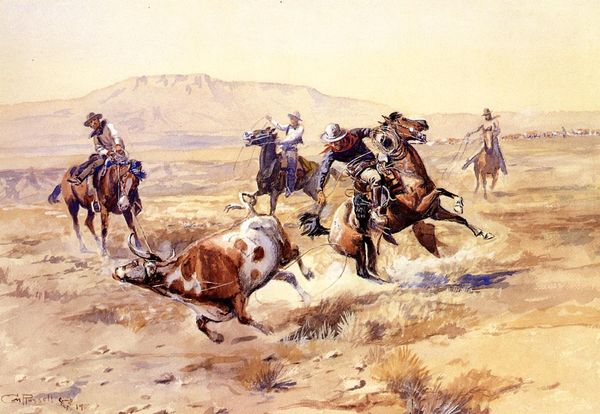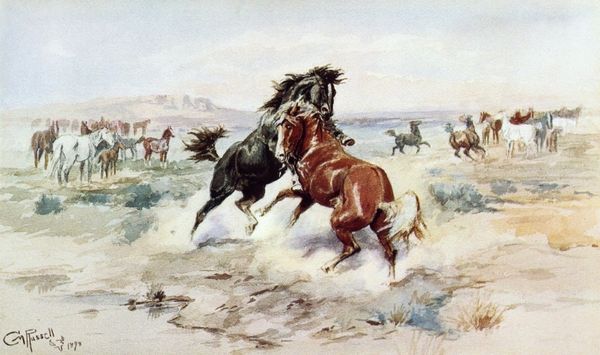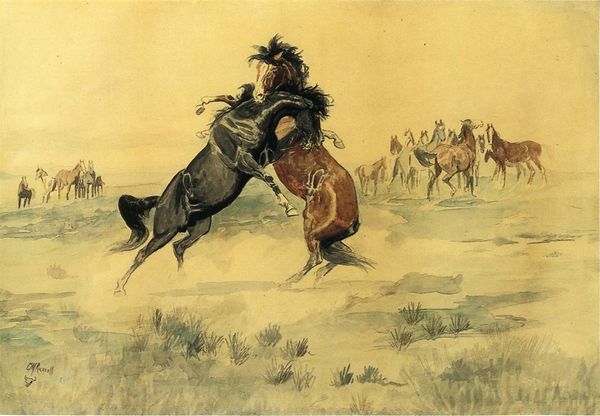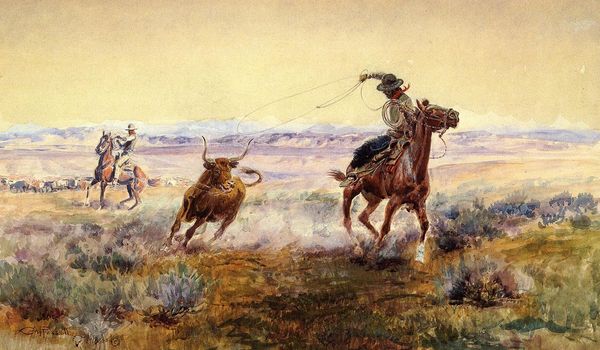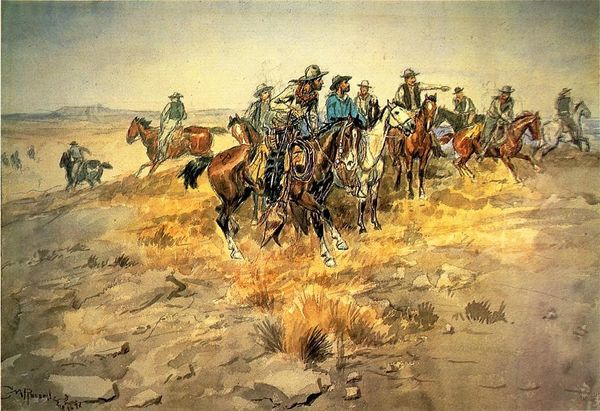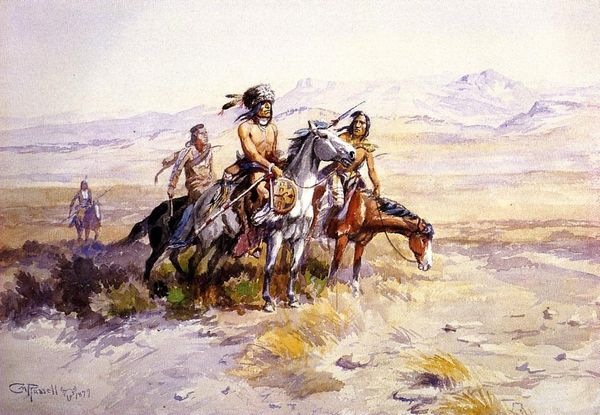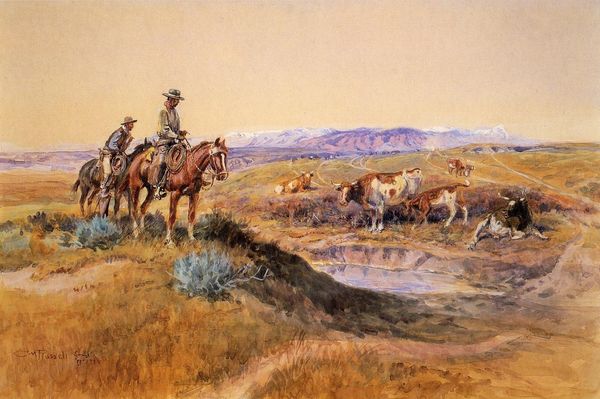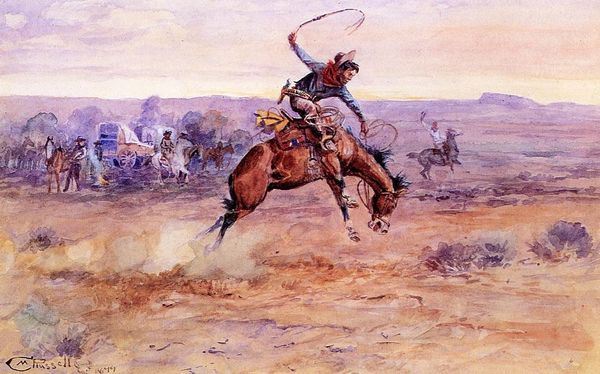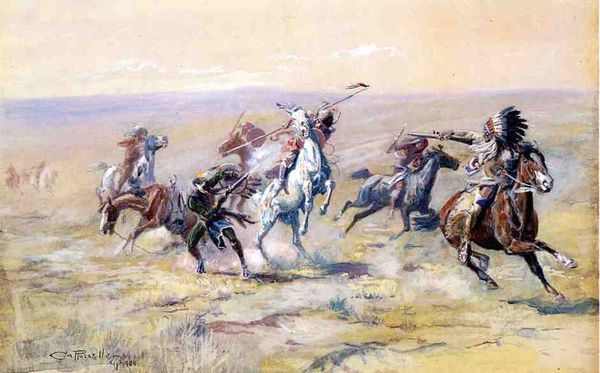
painting, plein-air, watercolor
#
painting
#
plein-air
#
landscape
#
watercolor
#
watercolour illustration
#
genre-painting
#
realism
Copyright: Public domain
Curator: Look at this! Charles M. Russell's "Bronco Busting," painted around 1895. It's a watercolor, surprisingly delicate for such a dynamic subject. Editor: My immediate reaction is raw energy! The chaos is captivating. It’s all in the diagonal composition, right? The bucking bronco and rider are suspended mid-air, really emphasizing the struggle and, honestly, the violence of it. Curator: Absolutely. And it's essential to consider the cultural narratives embedded here. Think about the myth of the American West, particularly how it valorizes the conquest of nature and the supposed dominance of man over the animal. Editor: So, are we romanticizing exploitation here? The West was "won" at a cost, involving Indigenous dispossession, the exploitation of labor, and animal subjugation, clearly represented in that wild, strained posture of the bronco, practically a symbol. Curator: Precisely! Russell was deeply involved in depicting a changing West. The cowboy life was romanticized and mythologized even then. The figures who observe in the background are intriguing: perhaps they’re shaping a shared identity based on this conquest of man over the West. Editor: That’s valid. But also consider Russell's role. Was he glorifying or simply documenting a lifestyle? The painter uses watercolors and plein-air, suggesting it’s from direct observation in the field which is quite an achievement considering the dynamic motif. Maybe that’s realism over romanticism at play here. Curator: A very important distinction. Realism allows a critical reading and reflection on this genre scene; for instance, what kind of masculinity does this spectacle promote? Certainly, a very stoic, unwavering image. It's very hegemonic, I dare say. Editor: It leaves me pondering the performance of masculinity within a specific historical framework, in the late 19th century American West. Beyond the painting itself, think of its influence on broader American visual culture. How many times have we seen this image reproduced and reimagined? Curator: A sobering thought. It's vital to remember the art world and the market, too. Who were the intended consumers of such imagery? The construction of that Western identity served economic and political interests. Editor: Indeed. Ultimately, it's a very striking, impactful, watercolor painting. Curator: And now, a call to recognize its complexity, and its relationship to power structures.
Comments
No comments
Be the first to comment and join the conversation on the ultimate creative platform.
